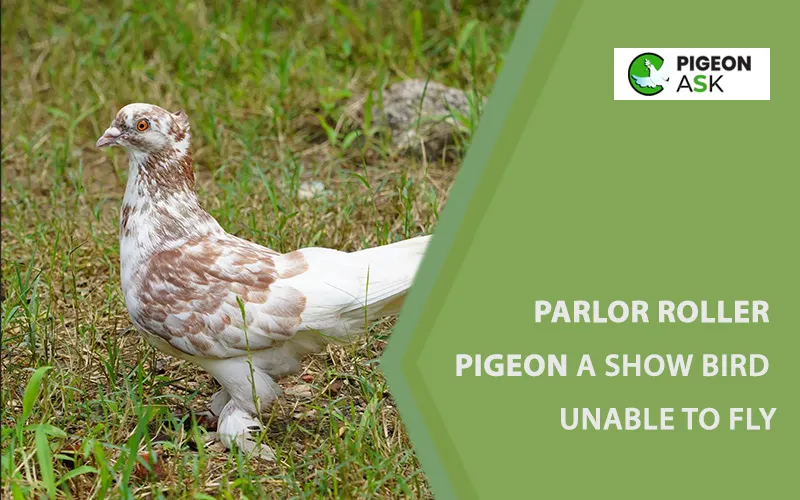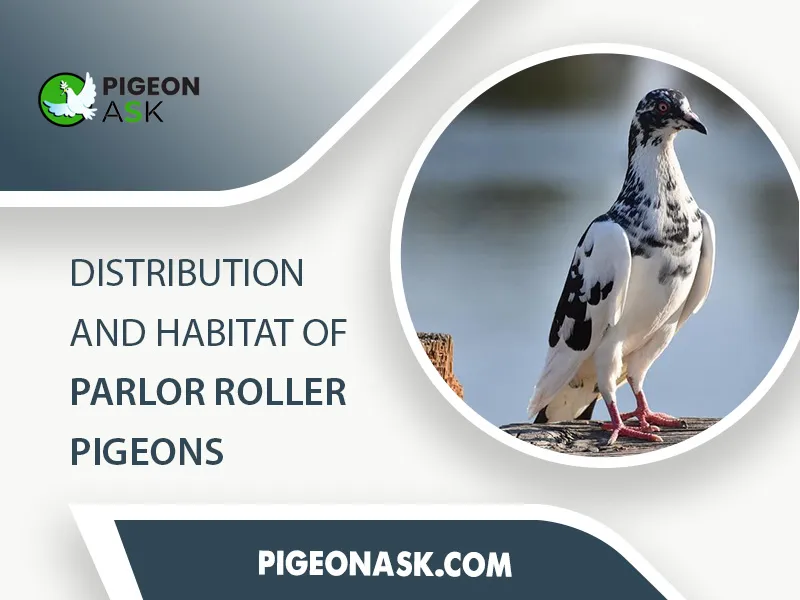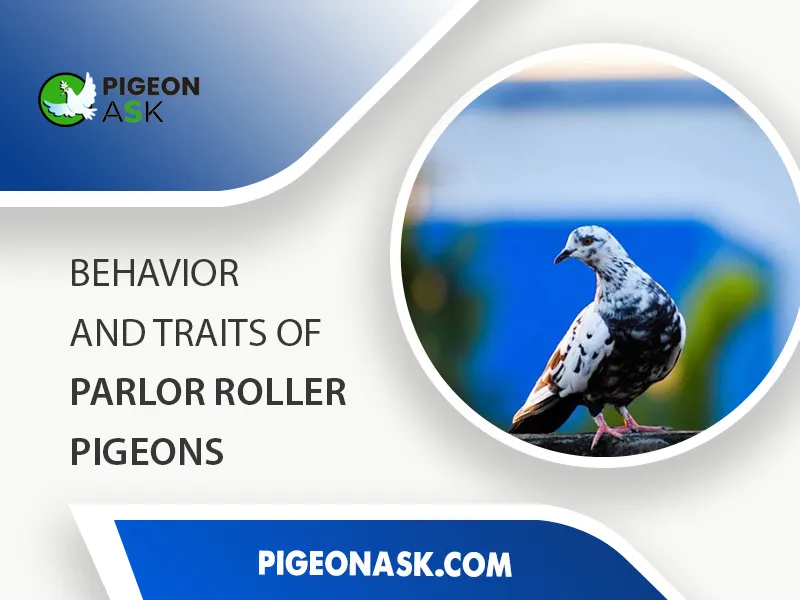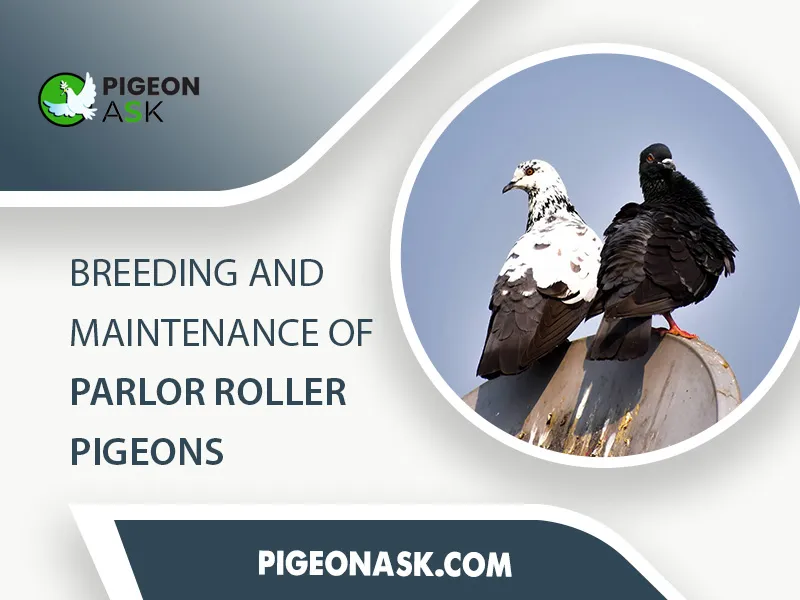Parlor Roller Pigeon: A Show Bird Unable to Fly
The Parlor Roller pigeon has to be one of the most interesting pigeon breeds in the world.
Developed as a domesticated bird via selective breeding, Parlor Rollers are highly popular because of their ability to perform backward rolls.
And yet, this is a pigeon that loses its ability to fly over time. Fascinating, isn’t it? Raising Parlor Roller pigeons is like a rollercoaster, equally fun and entertaining throughout the process.
For this reason, we’ve created this article to help you get to know this pigeon a bit more by learning about what the breed is like, how to feed them, what to consider while breeding them, and much more! Let’s begin!
Parlor Roller Pigeon Profile
| Name | Parlor Roller Pigeon |
|---|---|
| Scientific Name | Columba Livia |
| Common Names | Parlor Roller Tumbler |
| Origin | Scotland |
| Size | Medium size. |
| Weight | Approximately 0.7 pounds |
| Lifespan | 7 to 10 years |
| Physical Features | Standard |
| Temperament | Calm |
| Behavior | Docile |
| Special Features | Ability to perform backward rolls |
| Breeding and Maintenance | Easy |
| Common or Popular Varieties | Different colors and patterns |
Want to learn more about pigeon breeds:
Overview of Parlor Roller Pigeons
As a domesticated breed, the Parlor Roller pigeon is the result of years of selective breeding in Scotland. Over the years, the Parlor Roller has joined the group of flying and sporting pigeons primarily used for show purposes.

However, this pigeon breed is also good as a pet because of its hardy nature.
Its ability to perform turning somersaults on the ground is one of its most distinctive traits, and breeders usually raise them for competition based on how far they can roll on the ground.
History And Origins of Parlor Roller Pigeons
It took years of selective breeding to develop this breed, which resulted in a perfected show bird with some slight flaws. While the Parlor Roller is a spectacle to watch, this pigeon also loses its ability to fly along the way.
Historically, the exact date of the development of the Parlor Roller is unknown. However, many people allege that the first version of this pigeon originated in Scotland during the 19th century.

Breeders apparently noticed how some pigeon specimens rolled on the floor and decided to develop this characteristic further via selective breeding.
Why Breed the Parlor Roller Pigeon?
The Parlor Roller is a pigeon that can’t fly and people usually attribute this issue to a problem in the balance center of the brain of this pigeon.
Interestingly enough, the United States classifies this pigeon as a Flying/Sporting US Breed Group of birds. Why is that?
United States authorities classify the Parlor Roller as a Flying/Sporting pigeon because of how they view competitions.
In this case, the Parlor Roller belongs in this category because competitions focus on the distance the pigeon can roll. It doesn’t have much to do with flying or how the pigeon looks.
Physical Characteristics And Features
The physical characteristics of the Parlor Roller pigeon are not outstanding.
And that’s fine because pigeon fanciers don’t raise these birds because of their good looks.
In any case, we will break down the features of this bird to help you identify them.
| Physical Characteristics Name | Description |
|---|---|
| Head | Oval-shaped head, small in comparison to the body. |
| Eyes | Prominent, medium-sized eyes colored in deep black. |
| Beak | Small and can vary in color. |
| Neck | Strong, thick neck. |
| Body | Medium-sized body with a prominent chest and an upright standing stance. |
| Wings | Normal-sized wings that can be of one or different colors. |
| Legs | Relatively long legs of red color. |
Unique Features
The Parlor Roller pigeon has a set of unique features and behavior patterns that make it a breed like no other.
For instance, Parlor Rollers often perform involuntary somersault turns on the ground, which is something no other pigeons do.
The development of this trait dates back to pigeon fanciers in Scotland, making the breed one of the most popular bred and raised in this country.
The Parlor Roller displays incredible adaptability, as it is a bird capable of thriving in different environments, like urban settings, suburban locations, rural regions, and farms.
This level of hardiness also makes Parlor Rollers great pets.
But perhaps the most interesting and most unique feature of the Parlor Roller pigeon is its inability to fly once it reaches maturity.
Some Common Variations
There are no specific variations of the Parlor Roller pigeon other than the color. The pigeons can be white, black, brown and many other usual pigeon colors.
Distribution And Habitat
Does the Parlor Roller pigeon have a preferred habitat? Or where can you usually find these birds? We will answer these and more questions next

Geographic Distribution
Fortunately, the Parlor Roller is a pigeon commonly found in many countries around the world. Other than Scotland, this pigeon breed is easily available in countries like the United States or the United Kingdom.
Habitat Preferences
Like most domesticated birds, the Parlor Roller pigeon does not have a particular habitat preference.
These pigeons can and will adapt to rural or urban environments as long as you keep them properly sheltered and safe from predators.
It’s also necessary to keep the pigeons comfortable in harsh weather conditions.
Threats and Conservation Status
The Parlor Roller pigeon does not qualify as an endangered species. Instead, it’s a common bird with a good conservation status in many areas of the world.
Behavior And Traits of Parlor Roller Pigeons
Parlor Roller pigeons are interesting birds with fascinating personalities. As you raise them, you will notice how the birds can be very social with other pigeons and docile around humans.

This behavior makes everything easier for you, as you can create flock communities without temperament issues.
Differences Between Wild and Domesticated Pigeons
As a domesticated bird, the Parlor Roller cannot thrive in the wilderness. These birds are suitable for indoor environments, where their lack of flight capacity will not leave them at the mercy of predators.
Diet
The diet of a Parlor Roller pigeon should consist of balanced food, usually a mix of ingredients that provide minerals, proteins, vitamins, fats and more.
Typically, commercial pigeon feed provides all these nutrients and that’s why you should consider this product.
Alternatively, the usual pigeon pellet is another good source of rich nutrients and vitamins for this pigeon. Plus, you can complement this diet by including wheat, rice, nuts and fresh vegetables.
Flight
The Parlor Roller pigeon loses its ability to fly once they mature. For this reason, this pigeon breed is not suitable for you if you’re looking for racing or flying birds.
Homing Instinct
Parlor Roller pigeons do not have a strong homing instinct. Due to their domesticated nature, these birds do not fly long distances and don’t develop their homing ability as they did decades ago.
Nesting, Breeding and Courtship
Parlor Roller pigeons follow traditional breeding seasons, usually mating from March to June or August to November.
During this period, you must separate the mating pair based on the physical features you want in the offpsring. Once they have privacy, the male will court the female and she will accept these advances.
After mating and egg development, the female will lay one or two eggs. It takes approximately 20 days to incubate these eggs and the chicks may have full plumage after ten weeks or so.
Nesting
Nesting boxes are the most suitable for the Parlor Roller pigeons. Also, you can insert nesting materials like straw and toys to entertain the pigeons.
Chicks may roll out of the nest and a confined space could be the ideal option to control them.
Breeding And Maintenance
Taking good care of a Parlor Roller pigeon is straightforward. Once you supply food and water in a comfortable housing, the pigeons will eat properly and stay healthy.

These are two crucial factors while breeding these birds, as they must be in good condition to produce quality offspring.
Check out other tips you can implement to breed Parlor Roller pigeons successfully.
Some Tips and Considerations for Successful Breeding
- Consult with the breeder or seller to confirm the background of the pigeons you want to buy. You want to get a mating pair with strong genetics, no health issues and preferably unrelated to one another.
- Before mating two Parlor Roller pigeons, make sure they have matching physical characteristics. By taking this measure, will improve your chances of producing chicks with the desired traits.
- This pigeon breed produces good parents, but you still need to check the eggs regularly. It will allow you to keep track of breeding performance and what to expect from your Parlor Rollers in the future.
- After a few weeks, use bands around the legs of the pigeons to determine their relationship with other pigeons. Separate related birds to avoid genetic problems in future chicks.
Housing Requirements and Feeding Requirements
Aviaries, nesting boxes, or pigeon kit boxes are excellent housing for the Parlor Roller pigeon. Regardless of which one you prefer, make sure the setup has proper ventilation and plenty of space per pigeon.
Likewise, build the housing in an open space secured by fences to keep predators away.
Remember that these pigeons like to walk on the floor and do their tricks on ground level, meaning they need a spacious area to practice and learn tricks without restrictions.
Feeding
Provide a generous feed supply in a baking metal sheet or something similar to allow the pigeons to eat comfortably. You can replenish the food amount throughout the day, depending on whether the birds ate all of it.
Also, include a recipient with fresh water and grit separately to improve digestion.
Final Word
The Parlor Roller pigeon is a beautiful bird, arguably one of the most gorgeous worldwide. Paired with its ability to perform fantastic tricks, this bird is usually the go-to choice for shows and exhibitions.
Breeding and raising this pigeon breed also appeals to all pigeon fanciers. Since maintaining them is a breeze, even a beginner can have plenty of fun doing this project.
So, do you think the Parlor Roller pigeon is for you?
We feel fascinated by this pigeon and many other pigeon breeds as well. Come check out our insightful articles discussing the captivating bird world by following us on Facebook, Twitter and Pinterest.
